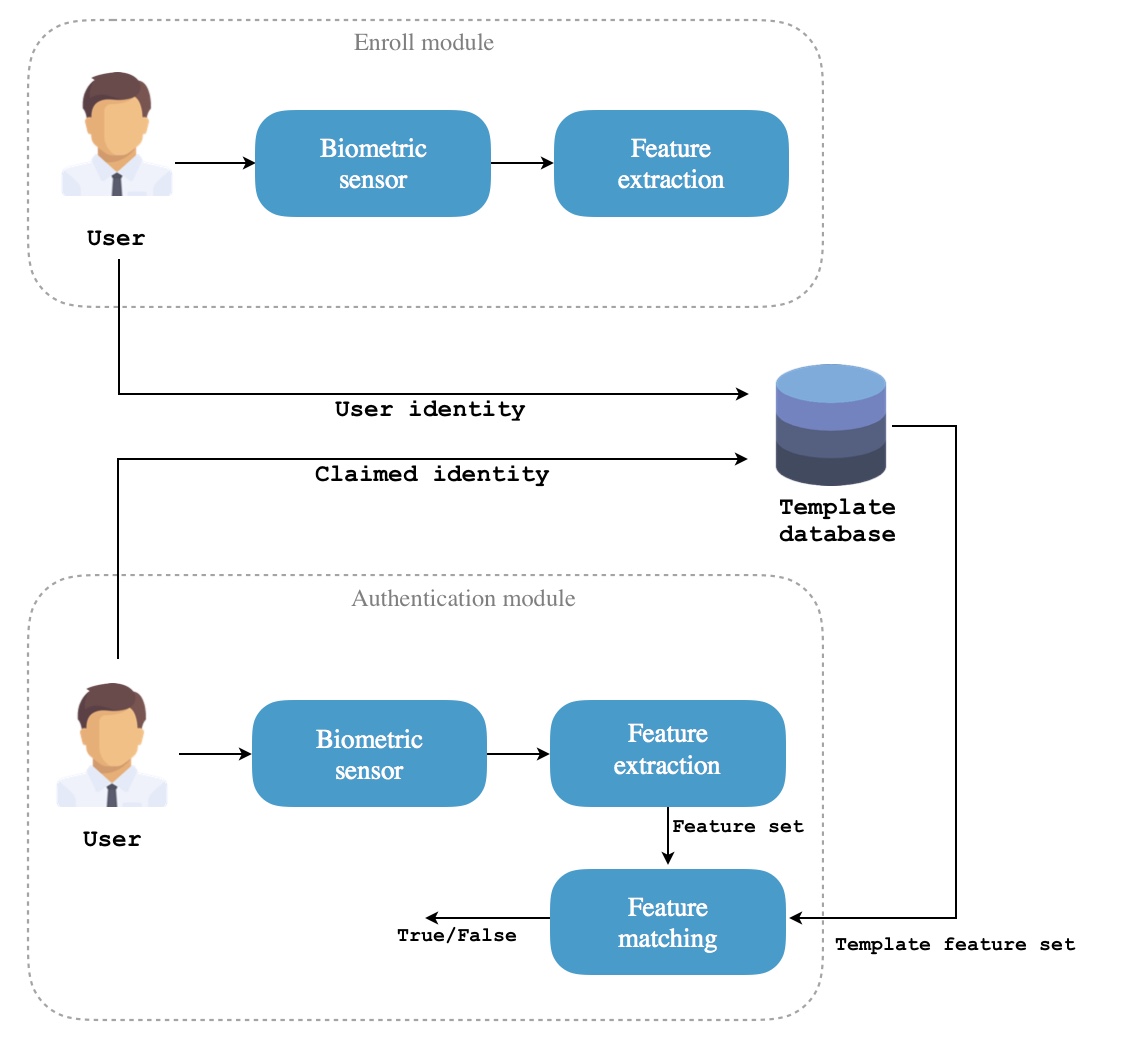Personal authentication
Biometric recognition systems are based on physiological or behavioural human characteristics, namely, the so-called “biometrics”, which are claimed to be unique, universal and permanent. They may be acquired by electronic sensors with or without the subject cooperation.
Fingerprint, face, iris, retina, palmprint and hand are typical physiological biometrics, whilst voice, key-stroke dynamic, gait are behavioural biometrics.
Biometric identification is done as follows. An identification number or string is associated to each person. The biometric is acquired and process as a signal. Processing is aimed to extract a set of measurements (“features set”) which point out its uniqueness. This feature set is compared with that, named “template”, stored on a smart-card or to a centralized database, in order to compute the match score, that is, a similarity value.

Adaptive biometric systems based on template update
Personal recognition through biometrics is focused on storing of the so-called client’s “template”, namely, the measurement, or feature, set which denotes the uniquess of his biometric with respect to those of other persons.
However, the client’s biometrics are subject to temporary or temporal variations: for example, a scratch on the fingertip may temporary change the ridge and valleys flow, as well as the lighting conditions may temporary vary during person’s acquisition over time. Moreover, some biometrics are prone to the “aging” phenomenon, as the face, which is subject to permanent, continuous slight variations over time. This causes a simple fact: the template acquired at a certain time is no more representative of the subject’s identity.
In order to reduce such effect, PRA Lab developed several algorithms aimed to automatic template update, called “self-“ and “co-“ update. Such algorithms have been developed for both mono- and multimodal systems. On this topic, PRA Lab is one of the most important group worldwide.
Thanks to these algorithms, the template set stored into the system “gallery” can be updated or renewed without or with the partial intervention of the external supervisor.
Latest Releted Publications
Biometrics research topics
RESEARCH TOPIC
Personal authentication
Personal recognition through physiological and behavioral characteristics.
RESEARCH TOPIC
Crowd Analysis
Anomaly detection in crowd analysis refers to the ability to detect events that deviate from normality.
RESEARCH TOPIC
Multimodal biometrics
Combining information coming from different biometric traits and soft-biometrics.
RESEARCH TOPIC
Behavioral biometrics
Analysis of behavior and biomedical signals in the biometric domain.

